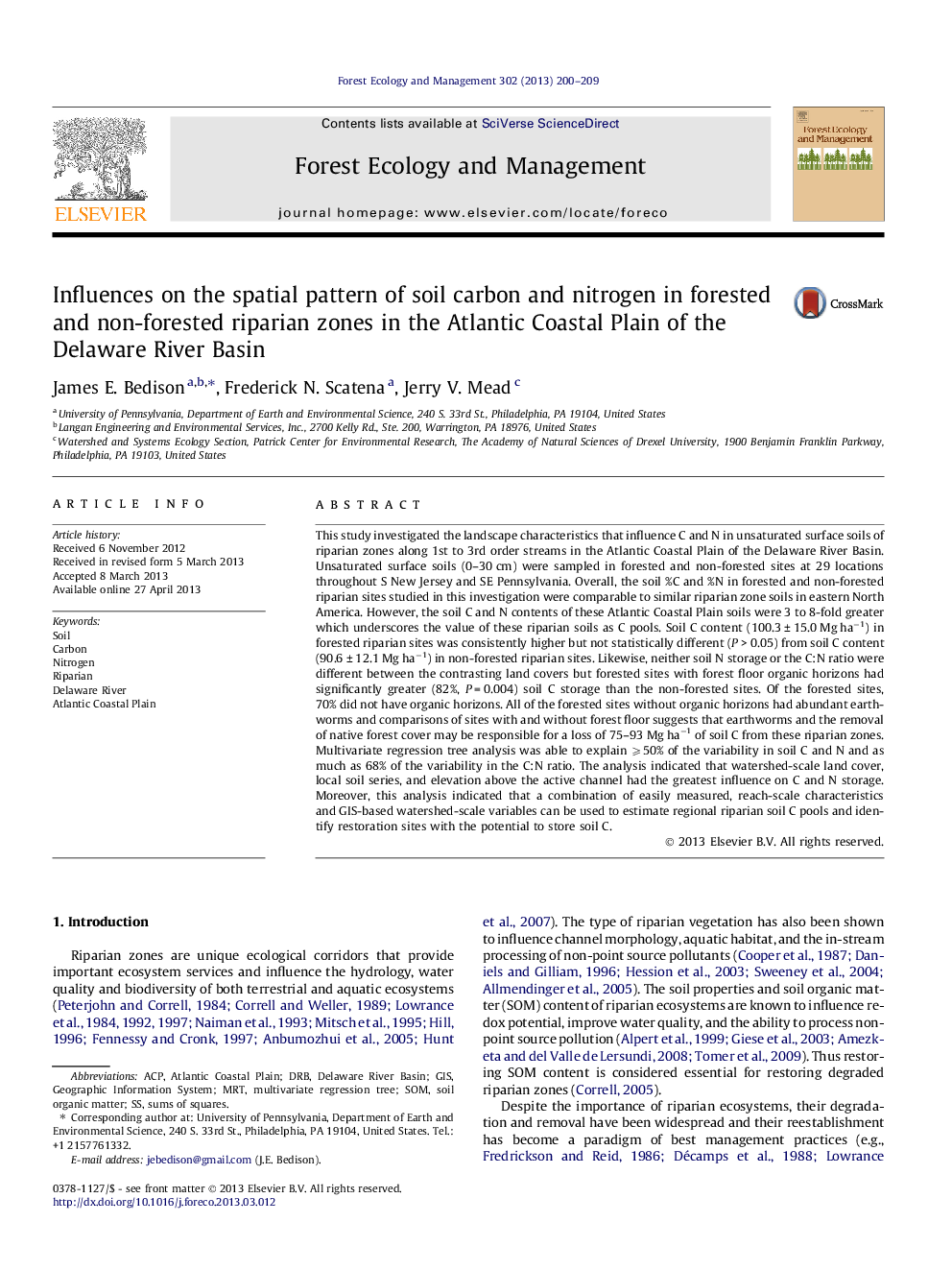| Article ID | Journal | Published Year | Pages | File Type |
|---|---|---|---|---|
| 87070 | Forest Ecology and Management | 2013 | 10 Pages |
•Soil C and N content was comparatively greater in riparian zone soils sampled here.•Soil C content in forested and non-forested riparian soils was not different.•MRT analysis was able to explain >50% of the variability in soil C and N content.•This approach can identify those riparian areas with potential to sequester soil C.
This study investigated the landscape characteristics that influence C and N in unsaturated surface soils of riparian zones along 1st to 3rd order streams in the Atlantic Coastal Plain of the Delaware River Basin. Unsaturated surface soils (0–30 cm) were sampled in forested and non-forested sites at 29 locations throughout S New Jersey and SE Pennsylvania. Overall, the soil %C and %N in forested and non-forested riparian sites studied in this investigation were comparable to similar riparian zone soils in eastern North America. However, the soil C and N contents of these Atlantic Coastal Plain soils were 3 to 8-fold greater which underscores the value of these riparian soils as C pools. Soil C content (100.3 ± 15.0 Mg ha−1) in forested riparian sites was consistently higher but not statistically different (P > 0.05) from soil C content (90.6 ± 12.1 Mg ha−1) in non-forested riparian sites. Likewise, neither soil N storage or the C:N ratio were different between the contrasting land covers but forested sites with forest floor organic horizons had significantly greater (82%, P = 0.004) soil C storage than the non-forested sites. Of the forested sites, 70% did not have organic horizons. All of the forested sites without organic horizons had abundant earthworms and comparisons of sites with and without forest floor suggests that earthworms and the removal of native forest cover may be responsible for a loss of 75–93 Mg ha−1 of soil C from these riparian zones. Multivariate regression tree analysis was able to explain ⩾50% of the variability in soil C and N and as much as 68% of the variability in the C:N ratio. The analysis indicated that watershed-scale land cover, local soil series, and elevation above the active channel had the greatest influence on C and N storage. Moreover, this analysis indicated that a combination of easily measured, reach-scale characteristics and GIS-based watershed-scale variables can be used to estimate regional riparian soil C pools and identify restoration sites with the potential to store soil C.
